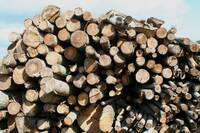The obstacles which lie in the path of good forestry are as follows:
Forest clearance, especially of ancient woods, can yield a financial profit but has many adverse side effects: soil erosion, nutrient loss, water pollution, landslides, flooding, reduced wildlife habitat, loss of recreational value, loss of species diversity, increased fire hazard, increased risk from insects and disease.
Plantation forestry cannot be 'commercial' in any ordinary sense of the word, because it takes more than one human lifetime for trees to reach maturity. Requiring foresters to be 'commercial' is bound to lead to short-termism and bad practice.
If communities are to invest money in long-term forestry, they have every right to be involved in the decision-making process.
Scientific forestry emphasises wood production and neglects such public goods as recreation, hunter-gatherer foods, scenic quality, soil conservation and nature conservation. Forest planning requires an appreciation of the natural sciences, the social sciences and the fine arts. Foresters do not often have this knowledge, and they need to remember that science tells us about means, not ends.
Good forestry is most likely to flourish under special management and planning laws, which enable a balance to be struck between public and private interests as they affect forestry and other land uses operating within or adjoining forest lands. These include agriculture, rough grazing, wilderness, water gathering, transport, housing, mineral extraction, recreation and nature conservation.
Forests are best owned by organisations which are both altruistic and immortal. These characteristics, always rare, have sometimes been found in great landowning families, monasteries and governments.
But it is easy to find out when and where forests are well-run. An American forester explains the method:
You don't have to be a professional forester to recognise bad forestry any more than you need to be a doctor to recognise ill-health. If logging looks bad, it is bad. If a forest appears to be mismanaged, it is mismanaged. But a certain level of expertise is needed if you are going to be effective in doing something about it (Robinson 1988: ix).
Using Robinson's method, on many walks in Britain's state-run forests, leads me conclude that they are mismanaged.

